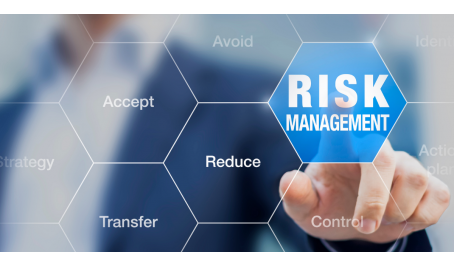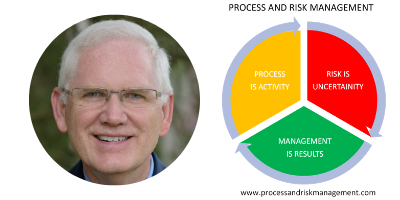Meet the Member: Gerry Gaffney, Process, Risk & Management Consultant
This week, we interviewed FACC Member, Gerry Gaffney, a Process, Risk and Management Consultant with many years experience in the banking, finance and other industries in the NYC metro area, and various overseas locations.
Gerry has an Economics degree from Rollins College and a Masters degree in Auditing from NYU. He has been designated as a Certified Internal Auditor, a Certified Manager of Quality /Organizational Excellence and has a Certification in Risk Management Assurance. He has successfully worked with firms of all sizes and in many industries.
Read more for his insights on enterprise risk management, value-adding processing environments for organiziations, and much more...
FACC: How would you explain enterprise risk management and its value to those outside of your field?
ENTERPRISE RISK MANAGEMENT (ERM) is the process of identifying and analyzing risk from an integrated, companywide perspective. Instead of relying on a traditional, department-by-departmental strategy, where each area of the organization manages its own risks, ERM adopts a broader perspective that integrates and coordinates risk management across the entire organization. An enterprise risk management framework has three purposes: (1) to create risk governance in alignment with the organization's structure and strategy; (2) to identify the key risks and the approach to managing all the combined risks; and (3) to design the organizational structure and accountabilities for managing risk in an organization.
ERM is about identifying and mitigating, to the firm’s risk appetite, the things that may prevent a firm from achieving strategic objectives. These are the things that, in many cases, will make or break a company. Because ERM is a firmwide approach, it eliminates silos and fosters increased communication and coordination throughout the organization.
FACC: Every organization has a value-adding processing environment that produces goods and services of interest to their markets. How does optimizing this environment produce the best results?
The concept of input-process-output is the essence of the processing framework. All work consists of someone receiving input, such as data, materials, analysis, communication, etc. – all which trigger the process step. The process step involves the tasks required to transform the inputs into outputs. The output is the tangible product or service produced by the process step. Typically, the output of one process step is input to the next process step as part of the full end-to-end processing environment. It is the coordinated effort of all process steps that produces goods or services to clients. In a process-focused organization, workers identify more with the processes they participate in rather than the department where they are assigned.
All process steps involve costs. It could be people’s time, resource cost, or the cost of inefficiencies within the process. By monitoring the efficiency and effectiveness of the full processing environment, you can reduce the costs involved in the process. This should have the benefit of higher quality output and a lower cost to produce.
FACC: In the times of the pandemic with many workers being remote, many processes around tasks, communication and decision making have changed. Do you think a reassessment of the processing environment is needed to ensure you are maintaining high-quality standards of output?
Yes, because the output is only as good as the value-adding processes that produce the output. Working remotely physically separates people who used to work together. This separation decreases communication or reduces its effectiveness. Also, the separation may result is decisions being made by people who have not been decision makers before, or they are making decisions with less than the usual information. Additionally, with many remote staff working from their own personal computers, there may not be adequate data security. Additional reconciliation and security controls may need to be inserted in the process to compensate for the changed processes.
Even if you had an efficient processing framework prior to the pandemic, it is possible that shortcuts are being taken or control steps are not being performed. All of these potential risks now require a revisit of how the work processes are actually being performed now to ensure that quality, completeness, timeliness and the other factors crucial to your success are being maintained.
FACC: Which of your services can smaller-to mid-size businesses in the FACC-NY network drastically benefit from?
Firms of all sizes have a processing environment that creates goods and services of value to their clients. I have seen in my experience that many of the small and mid-sized firms have not yet documented how their work is performed and how their different functional units coordinate efforts to efficiently and effectively produce outputs. I like the analogy of an orchestra. Individually, each musician can produce wonderful music. However, when all musicians join as an orchestra if they are not playing together as led by the conductor, it will not result in a very pleasant experience.
The value that smaller-to-mid-sized businesses can benefit from me is for me to help them coordinate and document all work as a cross-functional effort to produce superior goods and services. I could also work with these firms to identify, measure, monitor and sustain risk assessment and risk mitigating efforts to minimize the effect of risk events. If firms have risk management expertise that is superior to the competition’s abilities, they will be able to take on more risk, earn more revenue and be a leader in their market.
Smaller and Mid-sized firms could benefit from my services if they are looking to either putting themselves up for sale or are looking to acquire or merge with another firm. Most assessments of potential buy or sell scenarios rely on a review of prior financial results. Firms are valued mostly on prior year’s net income. This is a lagging indicator, or rear-view mirror approach. I can help firms in the acquisition mode to evaluate the process or value-creating capability of a target to determine if prior results can be reasonably inferred in the future based on the strength and efficiency of their current operating environment. This is a leading indicator approach. Similarly, I could do the same for a firm looking to be sold to present a clearer picture to a potential buyer so the buyer will have a better idea of what they are acquiring. This transparency eliminates a lot of uncertainty and hesitancy in these transactions.
Interested in connecting with Gerry? Log into the FACC Member Directory to send him a message.


